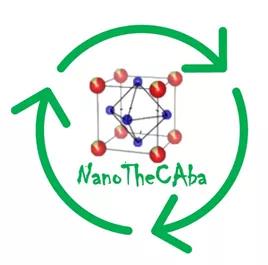NanoTheCAba
CECs and AMR bacteria pre-concentration by ultra-nano filtration and Abatement by ThermoCatalytic Nanopowders implementing circular economy solution

Partners
Partners
National Research Council - Institute for the Study of Nanostructured Materials (CNR-ISMN)
Aalborg University (AAU)
Liqtech International A/S (LQT) Welcome to LiqTech | improving our future - LiqTech
Centre for Nanotechnology and Smart Materials (CENTI)
Abstract
Abstract
The project will deliver an energy-efficient new integrated prototype system for water purification, composed of:
- the first-to-be realised ultra-stable silicon carbide (SiC) UltraFiltration/ NanoFiltration (UF/NF) membrane for pre-concentration of the CECs contaminated water,
- an innovative nano-enabled thermocatalytic energy-efficient packed-bed reactor (TPBR) for the generation of OH radicals able to abate CECs and residues of AMR bacteria via an Advanced Oxidation Process (AOP), and
- a nano-enabled antimicrobial MicroFiltration (MF) membrane.
The TPBR beads are obtained by recycling SiC membranes scraps deriving from the ordinary production process and will be coated with thermocatalytic perovskite-nanopowders allowing full abatement of Contaminants of Emerging Concern (CECs) and of Antimicrobial Resistant (AMR) pathogens at mild temperatures without the need of chemicals and light sources. The MF membrane is coated with antibacterial titania-silica-core shell nanoparticles for inactivating AMR bacteria while removing suspended solids. The UF/NF membrane separates the clean permeate stream, ready to be recycled or reused, from the toxic concentrate, which is purified by the TPBR, thus preventing the discharge of CECs and pathogens in rivers and oceans.
The new system is compact, amenable to scale-up, and ease to integrate into mariculture, aquaculture, tannery, hospital, and other industrial wastewaters treatment facilities, providing safe and efficient operation. The integration of the three components allows the optimization of each system unit both alone and in combination, boosting the efficiency of the process and ensuring high water quality and safety, by enabling a water and SiC recycling multi-circular model.
WP structure
WP structure
WP number | Led by |
| WP1 | LQT |
| WP2 | CNR-ISMN |
| WP3 | CENTI |
| WP4 | AAU |
| WP5 | UNITO |
Expected research results
Expected research results
- Synthesis, characterization and Integration of the thermocatalyst in a ceramic membrane
- Application of the thermocatalyst to water treatment processes
- Easy and understandable application of the thermocatalytic membrane to clean polluted water